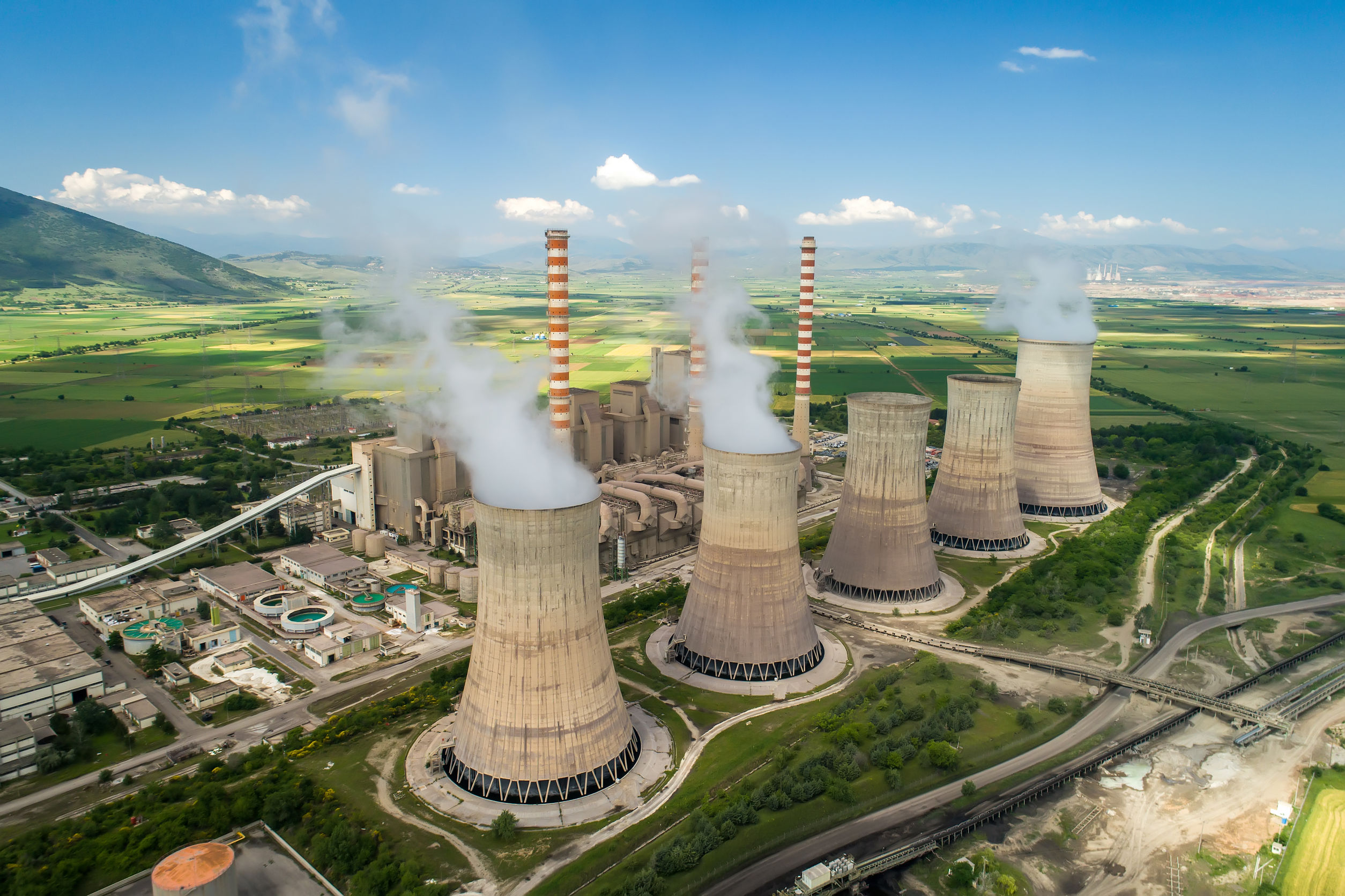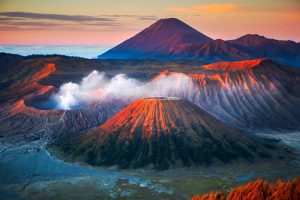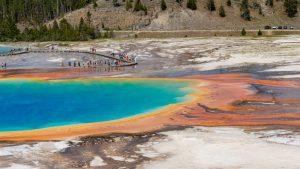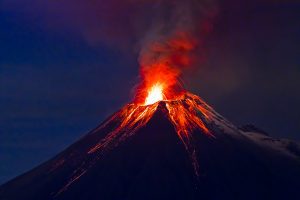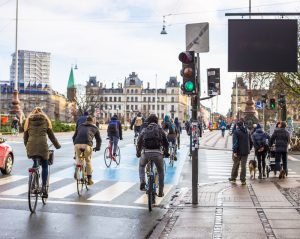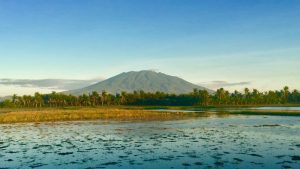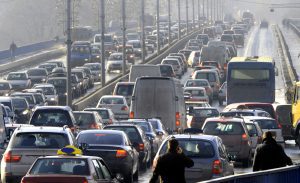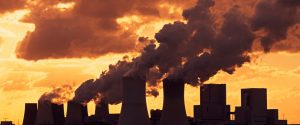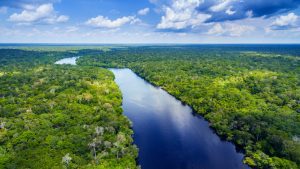There are 7 different types of pollution. They include air and water pollution which can be caused by human activity or by natural events such as volcano eruptions.
Most types of pollution can also be caused by human intervention such as traffic air pollution caused by car fume particles. Here are the 7 types of pollution, their causes, and notable pollution examples around the world.
Table of Contents
Air pollution
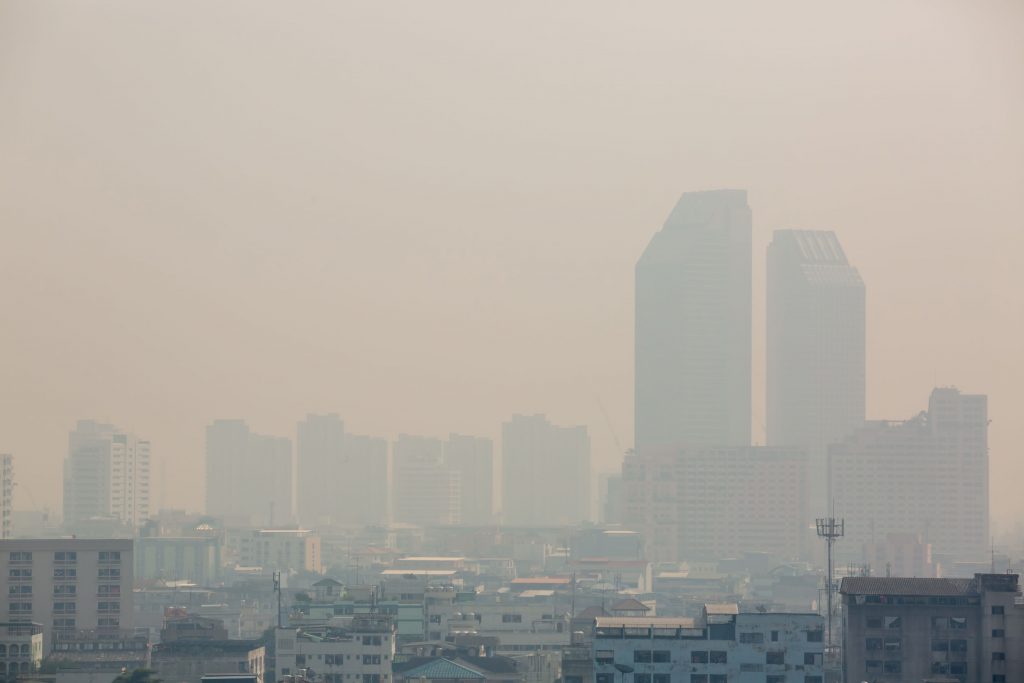
Air pollution represents the mix of solid particles or certain gases in the air. It is normally visible when these particles are in high numbers but most times, air pollution can be difficult to see.
The main causes of air pollution
There are a few large known causes of air pollution. We can split them into natural and human-made sources, according to where they come from.
Natural air pollution sources
Dust is one of the most important natural air pollution sources. Dust is present in the air in high quantities in areas with reduced vegetation. Large patches of land without grass and trees are naturally going to produce more air dust particles with blowing winds.
Methane emitted by cattle is also a rising source of air pollution. Smoke coming from natural wildfires is also a large air pollution source and such fires are seen every year in areas of hot climate such as Australia.
Volcanoes are some of the biggest air pollutants in the world. Mt. Etna in Sicily is the most active volcano in the world. It is believed this volcano emits as much Sulphur as all of the factories in France over one year.
Man-made air pollution
The production and consumption of energy are the biggest sources of man-made pollution. They have their impact both in production facilities such as fossil fuel coal-burning industries as well as in fossil fuel vehicles such as automobiles.
Man-made fires are also a big source of pollution. This practice is common in agriculture where crops are often set on fire with the risk of increasing air pollution periodically.
Waste is also a big concern when it comes to numerous types of pollution which also include air pollution. High amounts of waste emit methane and this is very dangerous. You can asphyxiate if you sit on a large amount of waste that emits large amounts of methane.
The military is also one of the biggest sources of pollution in the world. Chemical weapons and nuclear weapons are often detrimental to the environment and lethal to humans.
Air pollution dangers
Air pollution leads to serious health problems that are hard to avoid for those living in these polluted areas. Cardiovascular disease and lung disease such as cancer are some of the most problematic when it comes to air pollution.
It’s almost impossible to know the exact number of people affected by air pollution every year. But the World Health Organization believes more than 7 million people die every year from air pollution and the disease it causes.
Some believe half a million Chinese die prematurely due to air pollution even if other sources claim this number to be higher. But India is the most air polluted country in the world. The burning of fossil fuels such as coal, improper waste management, and millions of cooking house fires or agricultural house fires kill millions of Indians every year.
Dealing with air pollution
Dealing with air pollution is very difficult at an individual level. But there are steps you can take to limit pollution and to stop its impact on your health.
Switching to an electric car instead of a diesel car can be one of the first steps to limit pollution. But even electric cars have a large environmental impact. This is why you could prioritize cycling where possible as a method of transportation.
Limiting the time you spend outside when smog levels are high is also important. If you love sports, you should also take care of your body by being active outdoors in areas with low pollution, preferably as far as possible from heavy traffic. You should also avoid sunbathing in heavily polluted areas as the ozone layer is thinner in such areas.
Water pollution
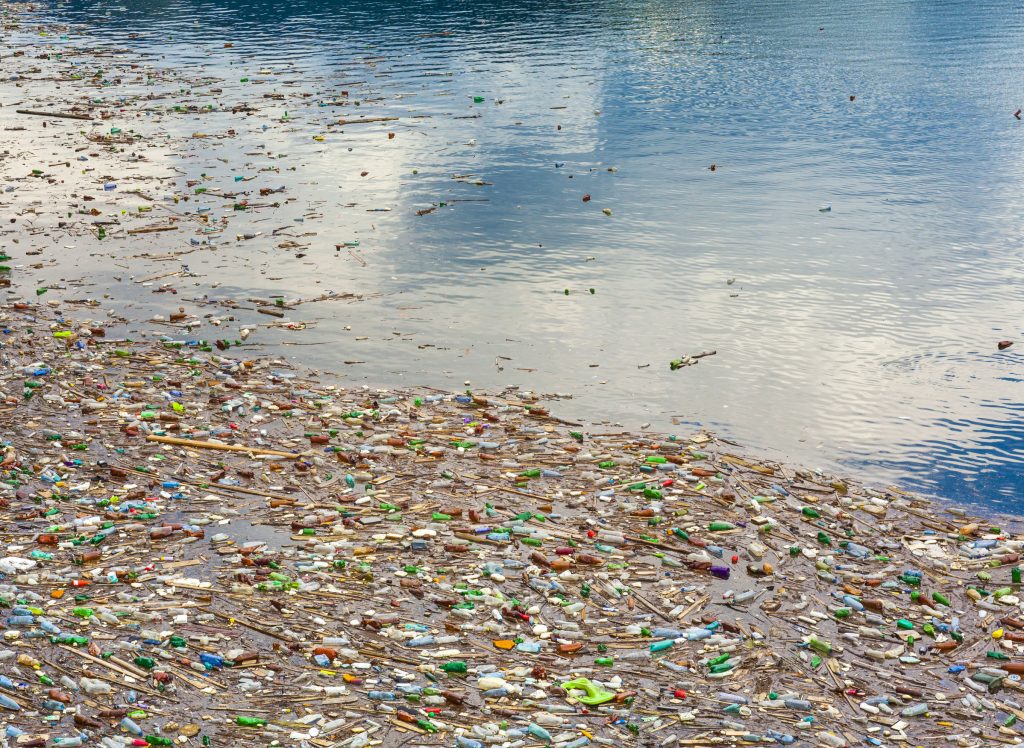
Unlike air, water pollution is mainly the result of human intervention. Water can be polluted at the surface or greater depth. Anthropogenic water pollution or the pollution caused by human activity is declared when the biotic life is affected by water. In some cases, water pollution can also be caused by nature such as volcano eruptions, storms, and earthquakes.
Water pollution causes
One of the biggest causes of concern for water is industrialization. Pesticides, fertilizers, plastics, nitrates, and phosphates can be found in contaminated or polluted water around the world. In some cases, high levels of iron come from previous industrial action such as former mines.
Fecal water dumping and rubbish in water are some of the other main causes of water pollution. This is an ongoing problem around the world. Recent statistics from the United Nations shows that almost all fecal water reaches rivers and seas completely untreated. This can be as troublesome as fuel spillage.
The biggest oil spill in history happened in 1991 in the Persian Gulf. During the Gulf War, Iraqi forces poured at least 4 million US barrels of crude oil into the Persian Gulf in an attempt to stop US forces from landing on the shores. The oil spill was so large that fire kept burning for months on the surface of the water. All fishing in the Gulf halted as a result in 1991.
Agriculture can also pollute water. Chemicals from agriculture are routinely dumped into the water around the world. To a lesser extent, deforestation also plays a role in water pollution. Organic residue from deforestation creates bacteria that kill fish and marine life when seen on a large scale.
The main water pollution effects
The effects of water pollution are very hard to quantify. For some communities, they equate to not having clean drinking water. In other cases, water pollution stops the creation of various natural biodiverse ecosystems.
Contamination of food such as fish is one of the most problematic when it comes to water pollution. As seen in the Persian Gulf oil spill above, fish from contaminated areas cannot be eaten as the entire fishing activity was stopped for one year.
A lack of clean drinking water is another considerable problem. The contamination of rivers has its faults when it comes to limiting access to clean drinking water as most towns and villages were constructed next to clean water sources.
Diseases are triggered by drinking dirty polluted water. Some people around the world have no choice but to drink polluted water. Some of the possible health issues they face include cholera and hepatitis. This is frequent in African states where water sources are limited and where the chances of drinking contaminated water are high.
Infant mortality is the biggest effect of drinking polluted water. Kids are often first exposed to polluted water. The United Nations informs that almost 1.000 children die each year after drinking polluted water.
How to prevent water pollution
Measures can be taken to improve and maintain water quality. Reducing CO2 emissions will slow down global warming. In turn, this will maintain natural water acidity levels around the world.
But preventing global warming is an international effort and there’s little you can do as an individual here. However, you can limit the pesticides which reach the water as a result of agriculture. Some of the pesticides in agriculture eventually end up in rivers in the oceans.
One of the biggest actions you can take on an individual level to prevent water pollution is to reduce the use of plastics. All types of plastics are generated as a result of buying food. You can look for alternative products that limit the use of plastics. Some plastics can’t even be recycled and it’s worth preventing them from reaching the oceans in the first place.
You can also promote sustainable fishing which maintains constant fish levels in the oceans. Most fish we eat today should come from sustainable sources from around the world.
Land pollution
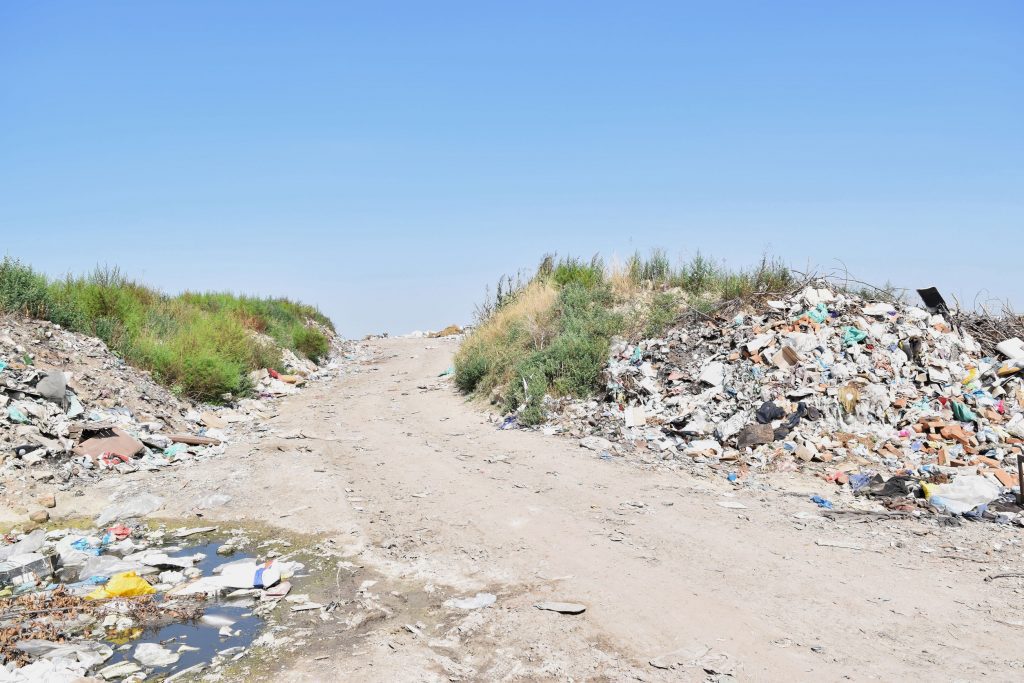
Land pollution is the destruction or deterioration of surface soil. Typical causes of land pollution include human activity. Land pollution is mainly seen today around the world as a result of overpopulation and heavy industrialization.
Land pollution causes
Land pollution can be caused by solids such as waste, liquids such as chemicals, gases such as methane, or small airborne particles such as dust which settles with the wind.
Landfills
Overcrowded landfills are the biggest cause of concern in the world when it comes to land pollution. Even with perfect recycling, landfills are working above maximum capacity in most countries. There are various types of garbage found here. Household garbage such as packaging and food waste are among them. Industrial garbage such as old electronics and old cars are also at least as important in landfills.
Industrialization
Food, housing, and consumer goods are now produced in larger quantities than ever. This creates plenty of waste in return. Old buildings are torn down and end up polluting land. Packing from construction materials or consumer goods that are no longer needed are also a direct result of the role of industrialization in land pollution.
Urbanization
The biggest change to land around the world is caused by cities. In history, even large cities were typically small from what we have today. But building large metropolitan areas pollutes the land in different ways. From the waste millions can do in a city to all the industrialization and the industrial waste of a municipality, cities can be some of the biggest sources of land pollution.
Agriculture
Large scale agriculture is one of the biggest causes of land pollution. Pesticides are directly infiltrating the ground to control insects. But pesticides can also make land unusable for years.
Deforestation
As a result of deforestation, the natural ecosystem often changes and it might even disappear completely. Deforestation is reducing wild animal numbers and it makes some areas a true danger to live around. Landslides are frequent in areas where there are no forests. Countries such as Iceland have been actively deforesting their lands that there is no more forest left to improve oxygenation.
Mining
Mining is one of the oldest land pollution influencers. Mining creates empty cavities below the ground and in some cases, land caving happens directly after mining activity. At the same time, much of the mining around the world is also a source of water pollution.
The effects of land pollution
Land pollution can be responsible for a negative impact on soil, water, and even air. These are its main effects.
Soil pollution
Soli pollution as a result of using pesticides can lead to contaminated foods. Soil pollution can also happen by accident. In 1991, a train derailed along the Upper Sacramento causing the biggest pesticide spill in California’s history. Metam sodium, a deadly pesticide was carried by the river killing and polluting animals and land in its path.
Groundwater pollution
Groundwater pollution is caused by leaks from landfills, industrial pollution, and mining pollution. All of these play their role in eventually making the land unusable for housing or agriculture.
Different rain cycles
Changes in rain cycles are a direct result of deforestation, a type of land pollution. Vast areas of forest impact how often we see rain. We know the largest forest in the world is the Amazon but deforestation here can impact rain cycles on a global scale.
Air pollution
Air pollution is another result of land pollution. Methane gases are emitted into the atmosphere by landfills and it can take a considerable effort to diminish these gases.
3 ways to control land pollution
As humans, we can make positive changes to land pollution and limit its extent even on an individual level but especially as groups.
Recycling
Recycling is the first step towards limiting waste. From clothes to electronics, recycling has the potential to eliminate the most problematic aspects of overflowing landfills. We can start with everyday products such as food packaging.
Eliminating pesticides
Pesticides in agriculture are highly detrimental to land. There are healthier alternatives to using pesticides today. Even more, switching towards small scale farming instead of large scale farming can reduce the use of pesticides further.
Organic farming
Organic farming doesn’t require any pesticides. It was just a few years ago that organic farming was simply called farming. But the heavy industrialization of agriculture eventually led to the widespread use of pesticides to produce more food faster.
Radioactive pollution
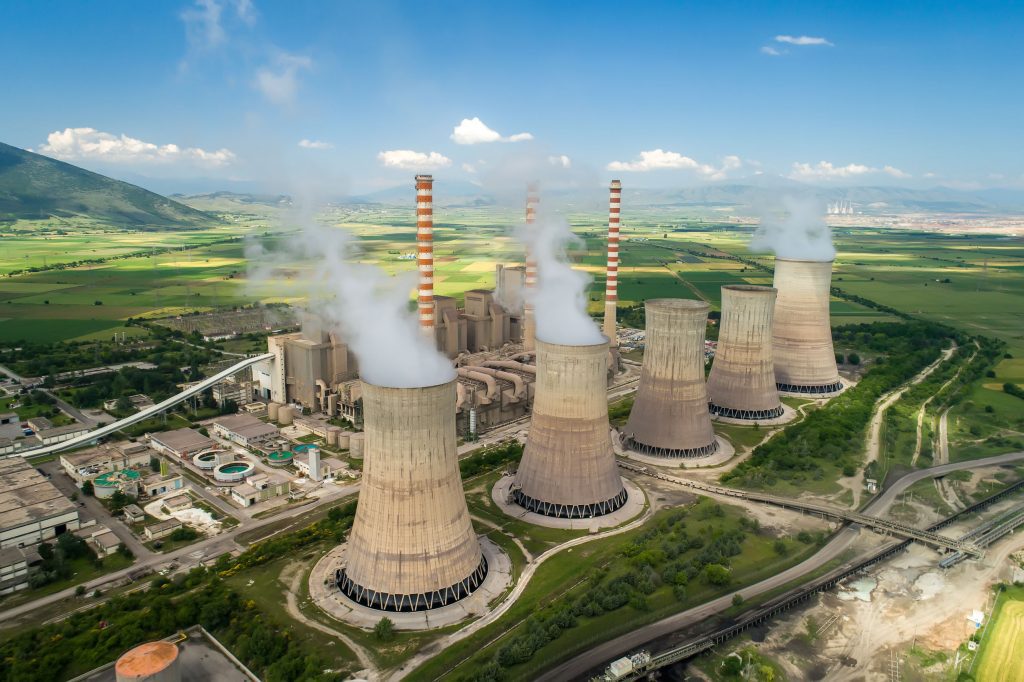
Radioactive pollution is the presence of radioactive substances in solids, air, water, or gases. Radioactive substances can also be found in the human body. Radioactive pollution can be the result of radioactive activity, mainly in the energy sector. But it may also be the result of natural areas of high radioactivity as soils can contain uranium and thorium.
Types of radioactive pollution
Both man-made and natural radioactive pollution can be further classified by occurrence. Some people believe the radioactive activity is only a concern when it comes to using nuclear weapons or by accident.
Continuous pollution
Continuous pollution is seen around nuclear reactors. Most of them are responsible for high levels of radioactivity. Uranium mines are also responsible for high levels of pollution that is never-ending. Test laboratories, specifically those in military-grade weapons that deal with uranium and other radioactive substances are also a constant source of pollution.
Occasional pollution
Occasional pollution happens during tests of a nuclear nature. We’ve seen various missiles being tested by the US, North Korea, and other countries that are high sources of radioactive pollution. The use of such weapons in an invasion such as Nagasaki has also been an occasional yet brutal source of radioactive pollution.
Accidental pollution
Accidental pollution happens with uranium spills or with nuclear accidents. One of the most famous nuclear plant explosions happened in Ukraine in 1986. The nuclear plant Chernobyl exploded when its main reactor suddenly dropped power.
Effects of radioactive pollution
The effects of radioactive pollution can never be properly quantified as they often spread over decades. Taking the example of the Chernobyl nuclear explosion, we can see just how much harm it can do to the environment and humans. While the explosion took place in 1986, the widespread nuclear particles (which eventually reached Europe and the world) were even responsible for 15 thyroid cancer cases back in 2004. Some reports estimate that as many as 200.000 people could have died between 1991 and 2004 as a result of this nuclear plant explosion. Even conservative figures show at least 10.000 cancer deaths during this period.
The exact scale of the disaster is yet unknown as Ukraine was under communist rule in 1986. But we now have evidence to show that European media even encouraged abortions for pregnant women in 1986 as a few the radioactive cloud spreading over the continent would have irreversibly damaged their kids. The effects of the Chernobyl 1986 accidental nuclear explosion haven’t been entirely diminished to this day.
How to limit radioactive pollution
It would seem nuclear accidents and weapons testing are still a period occurrence, even if world leaders discuss peace more than ever. For the health of the general public, there’s only one solution to eliminate this source of pollution.
Alternative sources of energy
Alternative sources of energy need to be considered to limit and eventually eliminate the need for nuclear plants. Green energy such as the one harvested from wind or the sun is the true way to replace nuclear energy.
The total elimination of nuclear weapons is also a must. Seeing the humanitarian disasters left by the use of nuclear weapons in the past only shows people can’t be trusted with such weapons. All human-made radioactive pollution can be eliminated.
Noise pollution
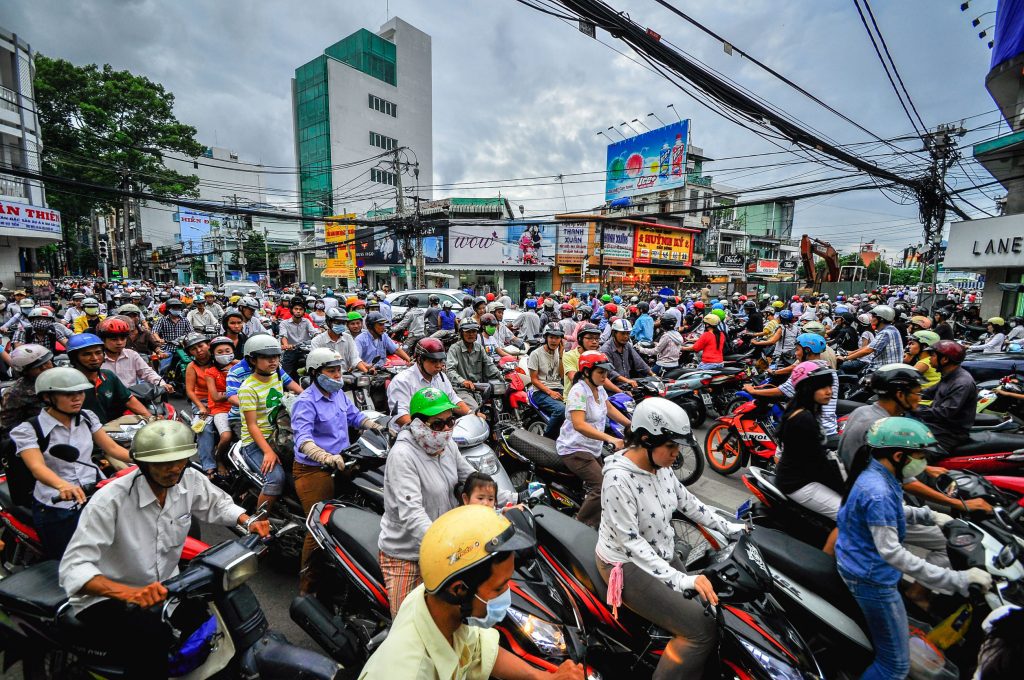
Noise pollution is exposure to high sound levels. It affects humans, animals, trees, flowers, and other micro-organisms. A noise level up to 70dB is not considered dangerous even when you’re exposed to it for long periods. Long exposure to noises of over 85dB is particular to busy locations such as airports, busy roads, and even highways.
All of these high noise pollution locations aren’t just an audible discomfort. It has been shown noise pollution causes health issues as well.
Hypertension is one of the many health issues faced by those living in areas with high noise pollution. But the most problematic health issue is hearing loss. These areas can be problematic in the long term both for kids and for adults.
Trucks, airplanes, and heavy machinery can be responsible for even higher noise levels. This is why you can see trucks, airplanes, and trains produce more than 120dB of noise which is considered harmful even when exposed to for short periods.
Psychological dysfunctions are also caused by noise pollution. It has been shown that prolonged periods of high noise exposure negatively impact your mind. One of the worst wartime forms of torture was being isolated in a room with loud music.
Types of noise pollution
Noise pollution is one of the worst types of pollution as it generally can’t be reduced if coming from busy areas. Some of the world’s largest cities have seen an increase in noise pollution and continuous growth ensures the noise levels won’t diminish.
Traffic
Traffic is one of the main sources of high noise pollution around the world. Vehicles running around all day produce noise. High speeds produce even more noise. This is why those living next to busy highways normally have the highest levels of noise.
According to recent statistics, Guangzhou is China is the most noise polluted city in the world. The heavy industrialization and the millions of vehicles here produce so much noise that it almost becomes unbearable for someone like Zurich, the world’s least large noise polluted city.
Delhi in India, Cairo in Egypt, and Istanbul in Turkey follow Guangzhou in this negative standard of living chart based on their high noise pollution levels. The lack of clear noise regulation (as seen in the US and the EU) makes some of the worst cities for healthy living.
Airports
Airports are also problematic. Homes next to busy airports don’t get any noise breaks too often. This is why landing planes or airplanes taking off make some of the highest noise levels as they sometimes reach the 120db barrier which makes the noise unbearable even for just a few seconds.
Constant loud music
Constant loud music is problematic as well. Concerts typically produce the most noise pollution, especially those held in cities. As a result, some of the largest world concerts are held outside city limits. Even kids listening to loud music on their headphones can permanently damage hearing.
Industrial machinery
Heavy industrial machinery is also a real noise pollution problem. A breaker hammer is so loud that the operator needs to wear protective headphones. Most countries now have specific rules for the time a construction worker can be exposed to such high noise machinery particularly to protect hearing.
Methods to reduce noise pollution
Keeping noise pollution levels down can be difficult if you already live in a noisy area. But there are small steps and large steps to tackle this type of pollution. Cities can limit traffic and they can separate the industrial zones from residential zones. On an individual level, you can consider the following suggestions to eliminate noise pollution.
Avoid prolonged use of headphones
Headphones can be the most problematic when it comes to long-term hearing loss. You shouldn’t listen to music on high volume for long periods as this tends to be the most detrimental to your hearing. Ideally, you’d also take breaks when using headphones to listen to music or podcasts.
Moving to areas without heavy traffic
Heavy traffic areas have been shown to trigger hypertension and other health problems for residents of the area. This is why you only need to consider the areas as far as possible from busy streets, factories, airports, and shopping malls. It might be difficult to move homes, but if you’re already living in such an area, you could consider the potential long-term health risks associated with continuous exposure to high noise levels.
Maintain an indoor noise level of 35db
The noise level inside the house can also be lowered with better quality windows and doors which are the first tool to fight high noise levels. You need to maintain a noise level under 40db, especially during the night when your body is naturally feeling the need to rest.
Heavy construction
Construction sites are some of the highest noise creators. Busy construction sites tend to be the most problematic especially those in urban areas. If you believe a construction site near you is operating at a troublesome noise level, you can measure it to see if it meets the maximum allowed noise level in your country. If you live in an area with constant construction, it’s wise to move if there’s no other alternative.
If you work in construction, make sure you wear protective gear even if you aren’t operating heavy machinery. You could be a carpenter but you could be working next to a crane. This is why construction workers, miners, truck operators, train mechanics, military, and civil aviation pilots need to wear some type of licensed hearing protection gear to prevent temporary or long term hearing loss.
Light pollution

Light pollution is the presence of high artificial light with possible negative health and environmental effects. Excessive light can be seen in large human settlements such as cities and studies show it can have negative health effects even if many don’t see it as problematic as other types of pollution.
Excessive artificial light is troublesome even for small but important habits such as sleeping. Studies show artificial light disrupts sleeping patterns which, in turn, leads to all types of sleep deprivation health issues. Here are the main types of light pollution to be worried about.
Types of light pollution
Did you know that light pollution such as glare can be more detrimental to your health the older you get? Loss of contrast in vision is one of its effects, especially with aging. The main types of light pollution can be categorized as follows.
Glare
Glare is one of the most common types of light pollution. Commonly seen in cities and villages, it can come from public lighting. Public illumination is made for the roads and the sidewalks. But we often see its glare make its way into our homes. This artificially creates extra illumination in the house which increases the pollution risks such as poor sleeping patterns.
Skyglow
On a larger scale, glare in cities creates skyglow. This is known as the situation where the entire sky seems more illuminated during the night than it is. In large cities, this creates an artificial light level during the entire night in the entire city.
Light trespass
Light trespass is the type of light pollution where artificial light accidentally makes its way onto a person’s property. For example, a garden light from your neighbor can shine over the fence to your home or bedroom window. This is known as light trespass. It’s present almost everywhere humans live and it has been present since the advent of industrialization.
Clutter
Light clutter is light pollution where multiple sources of light (typically artificial) create a cluster of light with the potential to confuse or to distort reality. This is commonly seen on busy roads with multiple source lights such as those from the cars, public illumination, and advertisement boards creating a confusing environment. This is typically addressed by those who designed the roads and the streets, people who are responsible for the way all of these lights look and their effects on humans.
The effects of light pollution
The effects of light pollution are still highly debated. Some believe they can’t be overlooked while others diminish their role in our lives. But most of those who agree light pollution is bad to have categorized its effects as follows.
Increased energy consumption
Higher energy consumption is seen with heavy industrialization and the rise of population, specifically in cities. Higher energy consumption indirectly impacts the environment as well. The more light we need the more impact we have on the environment.
Disrupted ecosystems
There are a few clear signs the ecosystem is negatively impacted by light pollution. For example, sea turtles can’t breed on beaches that are now artificially illuminated which means they can become extinct.
Migratory birds are also negatively impacted by artificial light. These birds can travel thousands of miles each year. They use different landmarks and locations for guidance or as a type of internal GPS that tells them the route they need to take. High levels of light pollution confuse these birds and eventually takes them to the path of extinction.
Danger to human health
The biggest impact of light pollution is on the circadian rhythm. Our natural biological clock tells us we need to sleep during the night and become active with sunrise. This pattern has been badly interrupted by the rise of artificial light. One of its direct impacts is a disruption in melatonin production. Artificial light during the night can suppress melatonin production, which impacts various hormones, cholesterol, and the immune system.
It is believed blue light pollution is the most problematic. It’s seen in smartphones, laptops, TVs, and most LEDs used today. To mitigate its pollution, you can use certain adjustable lights and technologies to reduce blue light production. Cool light during the day is recommended as is warm light during the evening as it helps you relax.
Thermal pollution
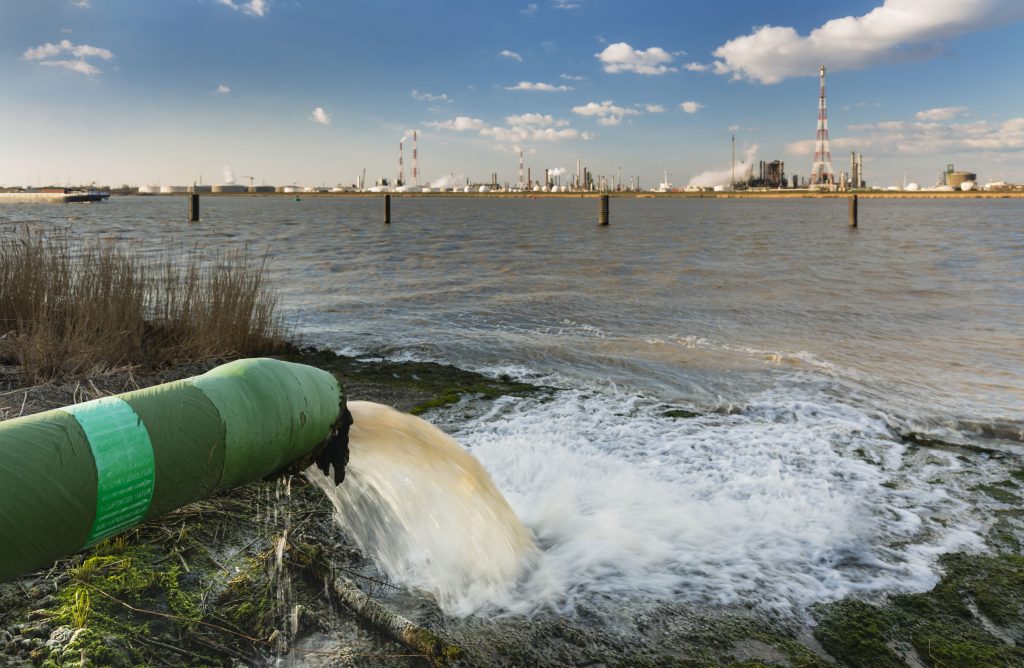
The sudden change in water temperature caused by humans to rivers, seas, and oceans is considered thermal pollution. This is the type of pollution that increases the risk of bodies of water changing forever as well as the risk of killing species and underwater plants.
Thermal pollution is seen all across the world following the high levels of industrialization as well as around cities where untreated sewage ends up in rivers or seas fairly untreated.
Types of thermal pollution
While most thermal pollution is man-made, we also know of natural causes of changing water temperature.
Industrial thermal pollution
Industrial thermal pollution such as water cooling techniques for large machinery is the biggest cause of thermal pollution in the world. Companies use water for cooling machinery by drawing it in from rivers, lakes, or seas and then dumping it back with a higher temperature. This disturbs natural ecosystems and it kills fish or it leads to mass fish migration.
Natural thermal pollution
Hot springs and erupting volcanoes can also reach bodies of water such as sea areas, lakes, or rivers. They also increase the water temperature eventually make the body of water inhabitable.
The main thermal pollution effects
Since it doesn’t impact humans directly, thermal pollution is often overlooked as an environmental priority. One of the main industries that use water as a cooling agent is coal thermal plants. They use more than 100 billion gallons of water per year. Such industries can have a devastating environmental impact.
Reduced oxygen levels
Reduced oxygen levels are seen in all areas of thermal pollution. This is the first cause of fish and plants in this area will begin to die if the pollution doesn’t stop. Affected areas often don’t regenerate and it can take years for fish to come back to the affected areas.
Increased water toxins
Since there’s no oxygen in the water, toxins are present in higher amounts. Even natural pollution can bring volcano lava with a temperature of around 50.000F to oceans changing the biodiversity of the area forever.
Fish migration
One of the effects of this type of pollution is the loss of local fish species. Fish don’t like sudden changes in water temperature and to protect biodiversity, large industrial players need to upgrade their cooling technologies.
Temporary or permanent loss of biodiversity
At extremes, thermal pollution eventually damages biodiversity completely. It can take years for it to regenerate and while many know nature tends to fight back on its own, the fish, algae, and water bacteria changes forever in affected areas.
Preventive measures for thermal pollution
One of the easiest tasks when it comes to dealing with man-made thermal pollution is to design large energy plants, factories, and industrial players differently.
Cooling ponds
Cooling ponds are the easiest to implement to avoid thermal pollution. Artificial ponds are excavated for the hot water to be evacuated in. From here, water is released back to rivers and lakes after it cools down.
Cooling towers
Old-school cooling towers can also be used in some industries. These direct and release heat into the atmosphere diminishing the reliability of water for cooling.
Cogeneration or hybrid cooling
Some types of hot water can be used for heating, even for residential purposes. Technologies can be implemented to use hot water from certain industries as a thermal agent. In a way, this hybrid method turns unused or even dangerous hot water for a good purpose.
One of the most famous cases of electricity stations being closed down for water pollution was seen in San Francisco starting with 2006 and ongoing to 2011 when the case was finally settled. The Potrero Generating Station eventually closed its doors due to environmental concerns. These were mainly tied to thermal pollution in San Francisco Bay.
Clear images were filmed of the hot water from the plant making its way to the Bay. In 2006, the first measures were taken by the mayor to close down the plant until it managed to find new cooling techniques with no thermal pollution. The electricity production plant failed to do this and it eventually closed its doors for good in 2011. Renewable energies were quoted as reasons for its closure. This measure wasn’t put in place until San Francisco found new sources of energy for the city.

